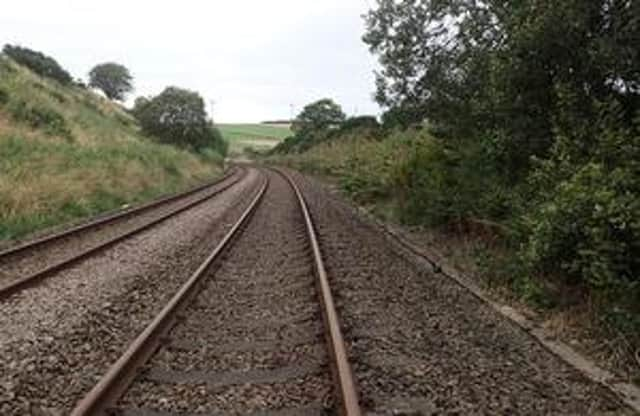Trains sped through emergency limit imposed during Aberdeenshire landslip fears


The Rail Accident Investigation Branch (RAIB) said two passenger trains travelled at more than double the speed limit between Laurencekirk and Portlethen stations in Aberdeenshire on December 4 last year.
The UK Department for Transport body said the emergency speed restriction of 40mph was imposed "as a precaution in case forecast heavy rainfall caused ground movements affecting the safety of the railway".
Advertisement
Hide AdAdvertisement
Hide AdThe two trains, one heading north from Dundee to Inverness and the other travelling south from Inverness to Edinburgh, were both going at up to 100mph - including when passing the site of the fatal crash at Carmont, south of Stonehaven.
Three people died on August 12 when a ScotRail service hit a pile of washed-out rocks and gravel before derailing.
The section of line between Dundee and Aberdeen was closed for three months following the crash, and it reopened just over a month before the trains broke the speed restriction.
ScotRail said it was assisting the RAIB with information about the December 4 overspeeding incidents, indicating its trains were involved.
They happened between 6.35am and 7.40am.
The RAIB's preliminary examination found neither driver was aware of the emergency speed restriction.
However, it said there had been a printed notice at their booking on points.
The RAIB said its investigation would include “the processes for advising train drivers of emergency speed restrictions”.
The second breach was picked up by a Network Rail signaller, with the first then identified through electronic records of train movements.
Advertisement
Hide AdAdvertisement
Hide AdDrivers were only notified of the temporary speed limit by a printed notice at their booking-on points, with no signs by the line.
The RAIB said: "The events were identified after a Network Rail signaller noticed the relatively short time taken for the second train to pass through the area.
"The first overspeed was then identified using electronic records of train movements.
"There were no injuries or damage as a result of these incidents.
"The only notification to drivers was a printed notice at their booking on points.
"Lineside signage was not provided by Network Rail processes applicable to this type of speed restriction.
"After the second overspeed, the method of working was changed so trains were stopped shortly before reaching the restricted area while signallers reminded drivers about the reduced maximum permitted speed.
"Our investigation will determine the sequence of events that led to the incidents and include consideration of the processes for advising train drivers of emergency speed restrictions.”
Advertisement
Hide AdAdvertisement
Hide AdThe RAIB said it would also consider “any overlap with issues identified during the on-going RAIB investigation of the fatal accident on August 12.”
A Network Rail spokesperson said: “We are working closely with the RAIB to assist them with their investigation.
"We and ScotRail have already looked into these incidents and have changed and strengthened our collective approach to implementing and keeping to speed restrictions.”
A ScotRail spokesperson said: “We’re unable to comment on the operational aspects of the incident due to the ongoing investigation.
“We have provided relevant information to RAIB and we will continue to assist them.”
A message from the Editor:
Thank you for reading this article.
We're more reliant on your support than ever as the shift in consumer habits brought about by coronavirus impacts our advertisers.
If you haven't already, please consider supporting our trusted, fact-checked journalism by taking out a digital subscription.
Comments
Want to join the conversation? Please or to comment on this article.